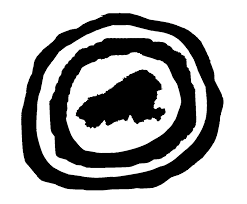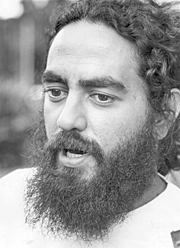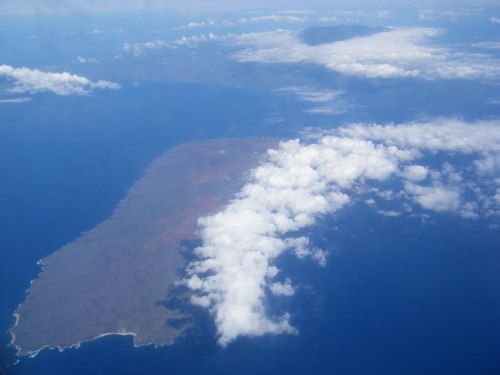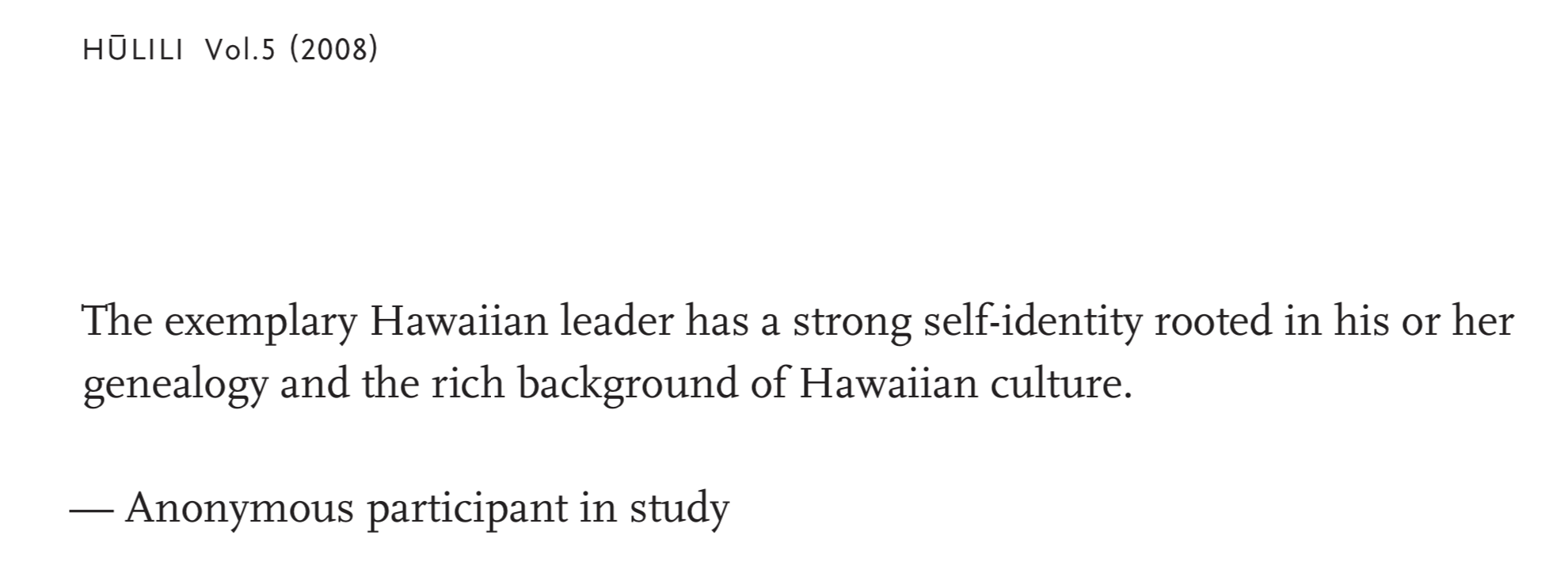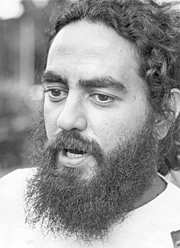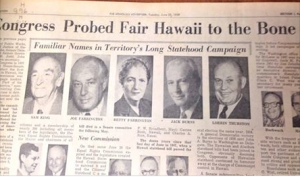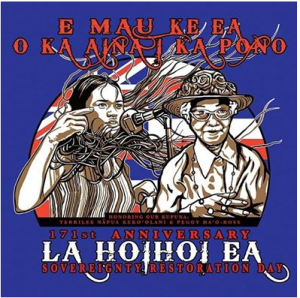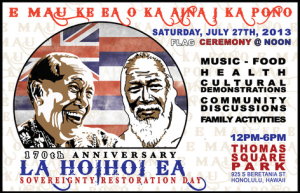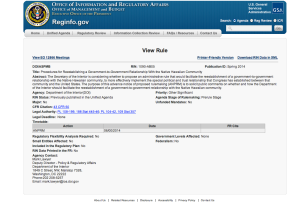UNIFICATION OF HAWAIʻI ISLAND
Kamehameha came of age under the rule and tutelage of King Kalaniʻōpuʻu. Following Kalani‘ōpu‘u’s death, there were certain ceremonies pertaining to the funeral and the transition of power. An ‘awa drinking drinking ceremony, for example, led to an altercation between the heir Kīwalaʻō and Kekūhaupi‘o who claimed that his chief, Kamehameha, had been insulted by Kīwalaʻō, who passed the ʻawa chewed by Kamehameha on to his aikane. Kekūhaupiʻo exclaimed “The chief has insulted us! Your brother did not chew the ʻawa for a commoner, but for you, the chief” (Kamakau, 1992, 119). The two sailed to Keʻei to avoid further conflict.

Portrait of Kamehameha I, ca. 1800
Key ali‘i involved in ensuing land division were Kīwala‘ō, Keawema‘uhili, Keōuakuahu‘ula, Kamehameha, Ke‘eaumoku and three other Kona chiefs. In reaction to the land division Keō uakuahu‘ula, who had only received the Ka ‘u district, his home district, prepared for battle because, as the son of Kalaniopuʻu and half brother of Kīwalaʻō he felt entitled to fertile agricultural lands (see Kamakau, 1992, p. 120 for Keouaʻs remarks on the land division). Keawemaʻuhili advised Kīwalaʻō not to give Kamehameha a significant amount of land, claiming, “this is not according to your father’s command. He [Kamehameha] has the god and his old lands as was commanded. You are chief over the island, I am under you, and the chiefs under us. So was your father’s command” (Kamakau, 1992, p. 119). This caused the other chiefs to rebel against the new political order. Ke‘eaumoku and three other chiefs from Kona aligned with Kamehameha, claiming that the division was “unjust,” and that they were “impoverished” by this division (Kamakau, 1992, p. 119).
In the battle of Moku‘ohai, Kīwala‘o was killed by Ke‘eaumoku while trying to save Ke‘eaumoku’s niho palaoa (whale tooth necklace that is a royal pendant) (Kamakau, 1992, 121). Ka‘ü forces cut down niu (coconut trees) at Keʻei, a challenge to the existing power structure and a “sign of war (Kamakau, 1992, p. 120). According to Kamakau, “ the coconut tree was a man … with his head buried underground, and his penis and testicles above ground (Kamakau, 1992, p. 120). There were at this point three aupuni (governments) on Hawai‘i Island:
One was led by Keawema‘uhili, Who had been captured, but allowed to escape, and whose strongholdor wahi pa‘a was Hilo, Keōuakuahu‘ula whose wahi pa‘a was Ka‘ü, and Kamehameha whose wahi pa‘a were Kohala and Kona because of the Kona uncles.
Two major battles on Hawai‘i led to an indecisive result, and the island remained as three aupuni (governments).
Kamehameha stepped back from war and focused on taking care of his aupuni – increasing its capacity for food production and thus for waging war. Challenges he faced included environmental limitations, large populations and supporting a large warrior force.
Accomplishments in overcoming these challenges included irrigation of kula lands, and the building of canoe ramps, which allowed for the launching of Kamehameha’s massive fleet of 800 pelelu canoes from the rocky coasts of West Hawai’i.
Meanwhile on O‘ahu, a conflict between Kahekili’s protégé Kahāhana and the priest Ka‘ō pulupulu was coming to a head. Kahekili prepared to launch an attack and asked for assistance from Kamehameha but received it instead from Keawema‘uhili and Keō uakuahu‘ula. With their assistance Kahekili captured O‘ahu.
FOREIGN VISITORS 1778 – 1796
Kuykendall (1938) lists the foreign ships to arrive in Hawaii, and also the Hawaiians who left on ships, noting that the first Hawaiian to leave Hawaii on a foreign ship was a woman, who was hired as a maid for the wife of a ship captain. La Perouse was third. Simon Metcalf took revenge on Hawaiians who had stolen a ship and killed one of his sailors, resulting in the Olowalu massacre, in which between fifty and one hundred Hawaiians were lured into paddling their canoes to one side of his ship, and then opened fire on them. Metcalf had earlier whipped Kameʻeiamoku with a rope for a minor/petty infraction, and Kameʻeiamoku vowed revenge on the next foreign ship, which coincidentally was the Fair American a sloop/schooner captained by Metcalf’s son. All of the crew was killed except one – Isaac Davis. John Young was taken from the Eleanor at the same time and both became trusted advisors to Kamehameha.

close-up of the Fair American at Kepūwahaʻula, the Battle of the Red-Mouthed Gun
Other violent incidents occurred, but according to Kuykendall, the relations between Hawaiians and foreigners were generally good.
OLOWALU MASSACRE
In 1790, the ship Eleanor arrived at Maui. Some Hawaiians stole the ship’s longboat, and in revenge, the British massacred many Hawaiians at Olowalu, near Lahaina, Maui (Kamakau, 1992, 146). One result of this event was that Kamehameha gained Western advisors and trainers in John Young and Isaac Davis. The two British foreigners became aikane, or favorites, of Kamehameha, John Young marrying Kamehameha’s daughter. Kamehameha also received from this exchange the cannon that became so valued it was given the name Lopaka.
KEPANIWAI
Before unifying Hawai‘i Kamehameha moved on Maui, a campaign culminating in the Battle of Kepaniwai (the damming of the waters) at Iao valley.
His opponent was Kalaniküpule who was the son of Kahekili, and he had as an ally Keawema‘uhili, the ali‘i nui of Hilo. This battle did not lead to unification, but has gone down in Hawaiian history for two reasons.
One notable event was Kamehameha’s rousing speech:
I mua e nā pō ki‘i. E inu i ka wai ‘awa‘awa. ‘A‘ohe hope e ho‘i mai ai
Go forward my dear younger brothers. Drink of the bitter waters.
There is no turning back.
One significant outcome of this speech is that it became the origin of Kamehameha Schools’ motto Imua Kamehameha. The second reason this battle is notable is that it was the first time the cannon “Lopaka” was used. This cannon caused “a great slaughter” (Kamakau, 1992) and introduces the question of Kamehamehaʻs reliance on Western technology.

Iao needle, Iao valley, Maui
The result of Kepaniwai was that Kamehameha gained temporary control of Maui. Kalaniküpule fled to O‘ahu, and Kahekili received aid from Ka‘eokülani to take back Maui. While Kamehameha was on Maui Keōuakuahu‘ula attacked Kohala and Hamakua and killed Keawema‘uhili. On Moloka‘i at the time Kamehameha said “Alas! While I have been seeking new children my first born have been abandoned!”
After one last indecisive battle with Keō uakuahu‘ula, Keō ua and Kamehameha retreated. While Keō ua was traveling through ‘Ōla‘a the volcano erupted killing one-third of Keoua’s army. The footprints of some of his soldiers can still be seen in the lava. This event may have been interpreted as the goddess Pele’s favoring of Kamehameha, but it certainly affected Keoua’s ability to wage war, and influenced his next decision.
Kamehameha focused in the meantime on cultivating his and his nation’s relationship with the gods. He consulted a prophet from Kaua‘i named Kapoukahi, asking what was required in order to unite Hawai‘i Island. The prophet responded that he need to build a house for his god, i.e., a heiau for Kuka‘ilimoku. This heiau was called Pu‘ukohola, and was built at Kawaihae, Kohala. The work of building this heiau was seen as being so important that Kamehameha did not exempt himself from the work of carrying stones. He had his brother, Keli‘imaika‘i maintain the kapu for their family. When Keli‘imaika‘i tried to carry a stone, Kamehameha took it from him and threw it into the sea.

Construction of Puʻukoholā heiau by Herb Kane
For the dedication of Pu‘ukoholā Kamehameha invited Keōuakuahu‘ula to come to Kawaihae, ostensibly to co-rule. Keō ua agreed to go to Kawaihae knowing that he was going to be sacrificed. The loss of one-third of his army meant certain defeat, and his acquiescence was a means of saving his Ka ‘u people from slaughter. Keoua stopped, however, at Luahinewai on his way to Kawaihae. At this pond he performed the ritual called “death of uli,” which consisted of “cut[ting] off the end of his penis (umuʻo)” (Kamakau, 1992, p. This was a final act of defiance toward Kamehameha in that it would make his body an imperfect sacrifice and therefore make Kamehameha’s unification imperfect.
Keoua arrived at Pu‘ukohola and his entourage sailed into the bay. When Keoua jumped off his canoe, Ke‘eaumoku immediately tried to killed him with a spear. This was to prevent a face-to-face meeting between Kamehameha and Keoua. According to Kamakau “Kamehameha might not have killed him, for he loved Keoua.” Nearly all the Ka‘u chiefs were killed. Thus, by 1791 Hawai‘i Island was completely under the control of Kamehameha.
KA NAʻI AUPUNI – UNIFICATION
Kamehameha was then forced to consider one of his actions from years before. When he was a young chief he was sailing along the coast of Puna. Kamehameha called out to some fishermen feigning that he wanted to speak with them. They fled, knowing that the six-and-a-half foot tall chief wanted them as sacrifices. Chasing them, Kamehameha foot became stuck in the lava rock, and the fishermen hit him over the head with a paddle. Reflecting on this, Kamehameha realized that his actions constituted an abuse of power. As mo‘i of Hawai‘i Island, he wanted to protect his subjects from such abuses by chiefs. He declared Kānāwai Māmalahoe, the law of the splintered paddle. This law proclaimed:
“Let the old men go and lie by the roadside, let the old women go and lie by the roadside, let the children go and lie by the roadside and no one shall harm them.”[2]

Artistʻs impression of the encounter that led to Kanawai Mamalahoe, by Herb Kane
This law meant that while travelling, people were not to be attacked, but were to be fed and housed. This was his way of granting the people of Hawai‘i security and freedom; security from the abuses of chiefs, and freedom of movement.
Kahekili died at the age of 87 in Waikiki, one of the prizes of his conquests. His son Kalaniküpule and Ka‘eokülani engaged in a battle in which Ka‘eokūlani died. Kalanikūpule then controlled O‘ahu and Nā Hono a Pi‘ilani – Maui, Lana’i, Moloka‘i and Kaho‘olawe.
Kamehameha next prepared to attack O‘ahu. In 1795, Kamehameha launched the campaign that culminated in the Battle of Nu‘uanu. Kamehameha’s fleet landed and attacked Lahaina and burned all the houses, then moved on to Moloka‘i, where the final planning meeting was held. An advisor named Ka‘iana, a Hawaiian [ali‘i] who had sailed on Western ships reaching China at one point, was excluded from the meeting. Taking this as an omen that he was to be killed, he defected with the 3,500 soldiers he commanded and joined Kalanikupule.
Kahekili had anticipated this attack years earlier. He quizzed his chiefs on where they thought Kamehameha would approach. One advisor thought that Kamehameha’s strategy would be to land at Waikiki and Leahi (Diamond Head). Kahekili said that this was the correct answer. Kamehameha did indeed land at Waikiki across a three mile stretch of beach. Kalanikupule did not oppose this landing.
Kamehameha’s army camped at Leahi (Diamond Head) for three days, and then began marching toward Nu’uanu. The first battle began at Kawananakoa, at the mouth of Nu’uanu valley. Battles continued up the East side of the valley. Ka’iana died in one of these battles. Kamehameha sent his soldiers with cannons up the East rim of the valley, firing down on the O’ahu troops. Kamehameha’s forces pushed Kalanikupule’s army up toward the Nu’uanu pali (cliff). The story is often told that Kamehameha “pushed them (O’ahu soldiers) over the pali,” but many of the O’ahu soldiers may have jumped over the pali, rather than being conquered by Hawai’i’s army.
Kamehameha was now in control of all the islands except Kaua‘i and Ni‘ihau. He regained Maui by virtue of its belonging previously to Kalanikupule.
Kamehameha next launched an attack on Kaua‘i, but encountered a storm and returned to O‘ahu. He took yet another step back to focus on his new, large aupuni, working to restore O‘ahu’s productivity. Kamehameha’s second attempt to take Kaua‘i in 1804 was stopped by the ma‘i ‘oku‘u, an outbreak of either cholera or bubonic plague. Kamehameha caught this disease, but survived. One who did not survive, however, was Ke‘eaumoku. On his deathbed, Ke‘eaumoku warned Kamehameha that the only threat to his rule was from his own daughter, Kamehameha’s wife Ka‘ahumanu.
Despite two failed attacks on Kaua‘i, by 1810 Ka‘eokulani’s son Kaumuali‘i felt he could not evade the impending takeover of his kingdom, and agreed to meet Kamehameha at Honolulu Harbor.
UNIFICATION OF KAUA’I
“Ke alo I luna, ai’ole ke alo i lalo?” Kaumualiʻi asked “Here I am; is it face up or face down?” The new King dismissed Kaumuali’i’s acknowledgement of Kamehameha’s superiority, and Kaumualiʻi continued: “This is my gift at our meeting: the land of Kauaʻi, its chiefs, its men great and small” (Kamakau, 1992, 196). Kamehameha replied that he would not accept the offer, but requested that “if our young chief [Liholiho] makes you a visit, be pleased to receive him.” (Tresgakis, 1973, 285).
